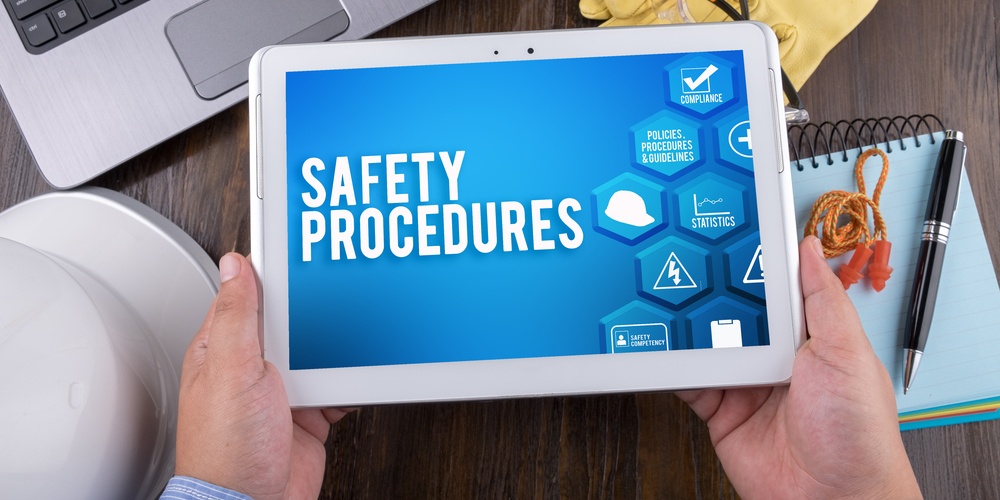The U.S. Bureau of Labor Statistics reported at least 4,764 fatalities in 2020, in addition to 2.7 million injuries and illnesses. While this is down from previous years, the statistics are still staggering. Most, if not all, of these cases, could have been prevented with proper safety training in the workplace.
Safety training might seem like something that can be done in-house, but that can be a bad idea unless you have the resources to hire a dedicated safety manager. Keeping employees safe is too important to delegate to an employee who has other responsibilities.
Beyond keeping your employees safe, there are many more reasons to outsource your safety training.
6 Reasons to Outsource Your Safety Training
As a safety saying from the early 1900s once stated, “Do not think because an accident hasn’t happened to you that it can’t happen.” Being prepared with safety training is essential to every business. Outsourcing your safety training streamlines the process and provides the following benefits.
1. Independent Review
In-house review of safety training may be biased since employees don’t want to anger their employer with potential problems, especially regarding additional costs. However, an outsourced professional will be direct on the steps that need to be taken to improve safety. You can also count on their expertise to inform decisions.
After all, safety isn’t an area you want to cut corners in since an accident costs companies on average $1,000 to $20,000 or more.
Also, it doesn’t look good during government investigations if you have delegated safety training versus outsourcing safety training to experts.
2. Lower Costs
Research has shown that improving safety training reduces injuries, which keeps workers’ compensation premiums down and training affordable. In fact, AmTrust reports that employers can save as much as 40% in costs associated with workplace injury and illness — not to mention $3 or more back for every $1 spent on safety training.
Even better, when you outsource, you don’t need to spend more time and money on:
- Hiring a dedicated safety specialist
- Hiring or training costs for dedicated safety specialist
3. Ensure Compliance
You must comply with federal, state, and local laws related to safety. An outsourced professional will be much more familiar with compliance and be better able to ensure you’re aligned with all the rules and regulations. For instance, employers must follow these OSHA standards to protect their employees’ health and safety in the workplace.
Examples of OSHA standards include:
- Limiting the amount of exposure to hazardous chemicals
- Fall protection
- Guards on machines
- Access to respirators or other safety equipment
- On-job training, and more.
Non-compliance fines can hurt business growth. The United States Department of Labor says that OSHA penalties can include $14,502 per violation for serious and other than serious violations, $14,502 per day beyond the abatement date if you fail to abate, and $145,027 per violation if your violation is considered willful or repeated.
4. Access to Experts
The importance of partnering with experts should not be underestimated.
Outsourcing your safety training can benefit your company and employees more because it is backed by the experience of experts who have worked across industries to improve safety training. What’s more, they know what techniques are most effective. For instance, automating safety training can do everything from lowering labor costs and increasing retention through engagement to offering microlearning opportunities and continuous learning.
5. Best-in-Class Safety Training
Simply put, the better your safety training, the better your results. An outsourced professional will have quick and easy access to all the best-in-class safety training your business needs to stay on top of health and safety standards.
For instance, a world-class safety program consists of:
- A safety audit
- Training new and existing employees
- Online education
- SOPs for proprietary equipment
- Training database
6. Improve Scalability
As your business grows or releases new products/software, you will need a larger team to create required training programs to support the initiative. On the other hand, you may only need small adjustments in the time in between major updates.
Partnering with an outsourced professional gives you access to the experts you need at the time. An outsourced partner will have you covered if you need a large team. Just need an expert or two to work on small improvements? An outsourced professional can help there too.
An in-house employee, however, will only be able to do so much for you. While you can hire additional help just for times of growth or releases, the time and money you put into it every time can add up to be much more than outsourcing.
Safety Through Outsourcing
By now, no one disagrees with the importance of safety training. How you receive that safety training, however, is still commonly debated. Many businesses may be tempted to cut corners and delegate the task to an existing employee.
Outsourcing safety training impacts a company more positively. This is because your outsourcing partner has the time and expertise to ensure your business and workers are safe.



